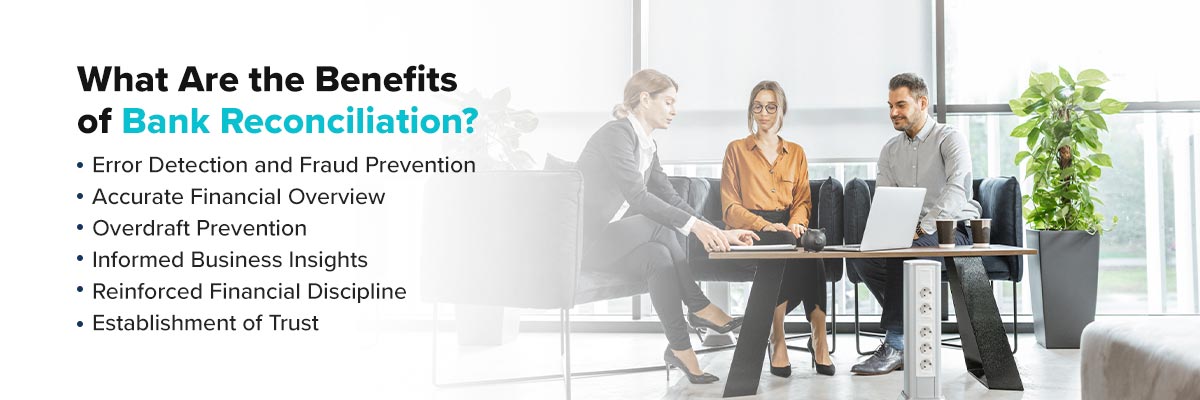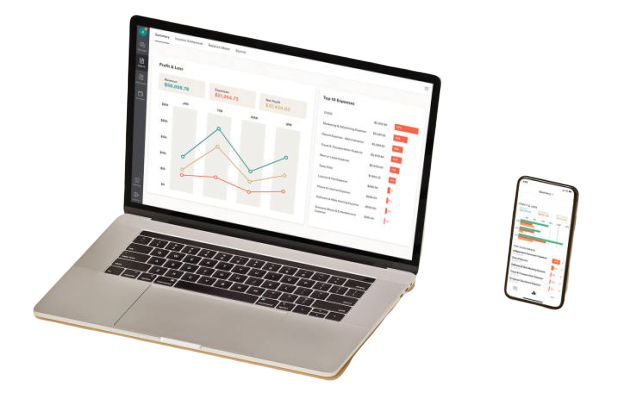
How to Accurately Perform Bank Reconciliation
A Bank reconciliation is something that every business owner will have to do at some point. It’s a relatively simple process, but ensuring that you have each and every item in place is critical. The purpose of this process is to determine the differences between your internal record-keeping and your bank statements. This protects you from money ever slipping through the cracks.
What Is Bank Reconciliation?
Bank reconciliation is the meticulous process of synchronizing personal or business financial records with the bank’s official statement. It thoroughly compares the transactions in the bank statement with the entries in the account holder’s financial records, such as ledgers and accounting software. This process detects any disparities or irregularities, ensuring an accurate and up-to-date representation of financial activity. Bank reconciliation is vital to identifying errors, discrepancies and potentially fraudulent activities during financial transactions.
3 Types of Bank Reconciliation
The practice of bank reconciliation encompasses three distinct types:
- Basic reconciliation: This involves scrutinizing the transactions on the bank statement and cross-referencing them with the records in the account holder’s ledger. Processing lags, data entry errors or omitted entries can contribute to disparities.
- Deposit-in-transit reconciliation: Focusing on the period-end deposits that still need to be reflected in the bank statement, this type of reconciliation prevents accidentally duplicating these deposits. This is particularly crucial for businesses that deal with large volumes of transactions.
- Outstanding checks reconciliation: By identifying checks that have been issued but are pending clearance with the bank, this type of reconciliation prevents the unintentional depletion of funds. It ensures that account holders have an accurate understanding of the funds available for use.
What Are the Benefits of Bank Reconciliation?
Bank reconciliation offers a range of practical advantages that enhance financial accuracy and management. Some of the many benefits of bank reconciliation include:
Error Detection and Fraud Prevention
Regular reconciliation serves as a vigilant guard against errors and potential fraud. Highlighting inconsistencies between the records helps detect unauthorized transactions or anomalies early. This is crucial for maintaining the integrity of financial records and safeguarding against financial misconduct.
Accurate Financial Overview
A clear and accurate representation of financial status is crucial for informed decision-making. Reconciliation ensures the alignment of ledger entries with the bank’s perspective, enabling the creation of precise financial statements. This, in turn, aids in budgeting, forecasting and strategic planning. Accurate financial information is essential for evaluating financial health and making well-informed choices.
Overdraft Prevention
Identifying outstanding checks and deposits in transit is pivotal in preventing overdrawing of funds. This safeguard ensures that account holders only spend what they have available, avoiding penalties and unnecessary charges.
Informed Business Insights
In business, bank reconciliation offers valuable insights into cash flow trends and spending habits. This facilitates the identification of potential cost-saving opportunities and informs investment decisions. Organizations can optimize their financial strategies by understanding how money moves in and out of the business.
Reinforced Financial Discipline
Frequent reconciliation fosters a habit of meticulous transaction tracking. This discipline extends beyond reconciliation, positively influencing overall financial practices. The attention to detail required for reconciliation encourages individuals and businesses to maintain accurate records and manage their finances more responsibly.
Establishment of Trust
Transparent financial management, exemplified through reconciliation, instills trust among stakeholders. It establishes credibility with investors, lenders and clients, enhancing relationships built on financial transparency and reliability.
Bank reconciliation is a critical practice in the financial landscape, offering a structured approach to maintaining accurate records and ensuring financial integrity. It is a powerful tool for businesses and individuals to navigate the complex realm of finance with confidence and precision.
What Are the Steps of Bank Reconciliation?
In order to begin a bank reconciliation, you will need to gather a few items. The first item you’ll need to collect is your bank records. You can get your bank records through a statement on your online banking portal or have the data sent to you by your bank. If you have a credit card account, you should collect that information too.
Next you will need to collect all of your internal bookkeeping records. This could be a log book, a spreadsheet, QuickBooks, or perhaps you don’t have one at all. If you don’t have bookkeeping records, Steph’s Bookkeeping Service highly advises you to get started today.
Once you’ve collected all of your data, you’ll need to find out your starting point. This is typically the last date that you performed a bank reconciliation; however, if you know that your records are good to a certain point, you should start there. Now that you have all of your data and you know you’re starting point; you can begin the actual reconciliation.
First, compare deposits between your bank statements and your records, then compare withdrawals. Check for any adjustments the bank may have made and add those to your records.
How to Complete a Bank Reconciliation Within Quickbooks
How to Do Bank Reconciliation
There are many different methodologies for performing a bank reconciliation, but we recommend a straightforward approach of segmenting by transaction type. This means you begin with reviewing all of your deposits for the entire period. Once you have determined that the bank statement and your internal statements match, then you move on to the next transaction type. After checking the income, withdrawals, and expenses, you have performed your bank reconciliation. Ideally, your ending balance matches between your bank and your internal statements.
What happens if your ending statements didn’t line up, or you found a transaction on one statement but not the other? In the hectic world of business finance this can happen, but this is why we perform bank reconciliations. If a discrepancy is discovered, it is crucial to investigate and discover where and when the discrepancy was created. Sometimes the issue is simply a clerical one and your internal books simply need to be updated. Occasionally, however, this can reveal a much deeper issue requiring your immediate attention.
Now you are well equipped and ready to begin performing your own bank reconciliations. You should plan to spend a couple hours each month performing this task. If your schedule does not allow this or you simply don’t have the correct information to perform a bank reconciliation, we recommend that you outsource your bookkeeping. With our reliable process, we can save you time and effort, all while ensuring that your money is right where it needs to be.
Contact Us Today
Ready to streamline your finances? Contact Steph’s Bookkeeping Service today and take the first step towards organized and accurate financial management. Your success is our priority.




